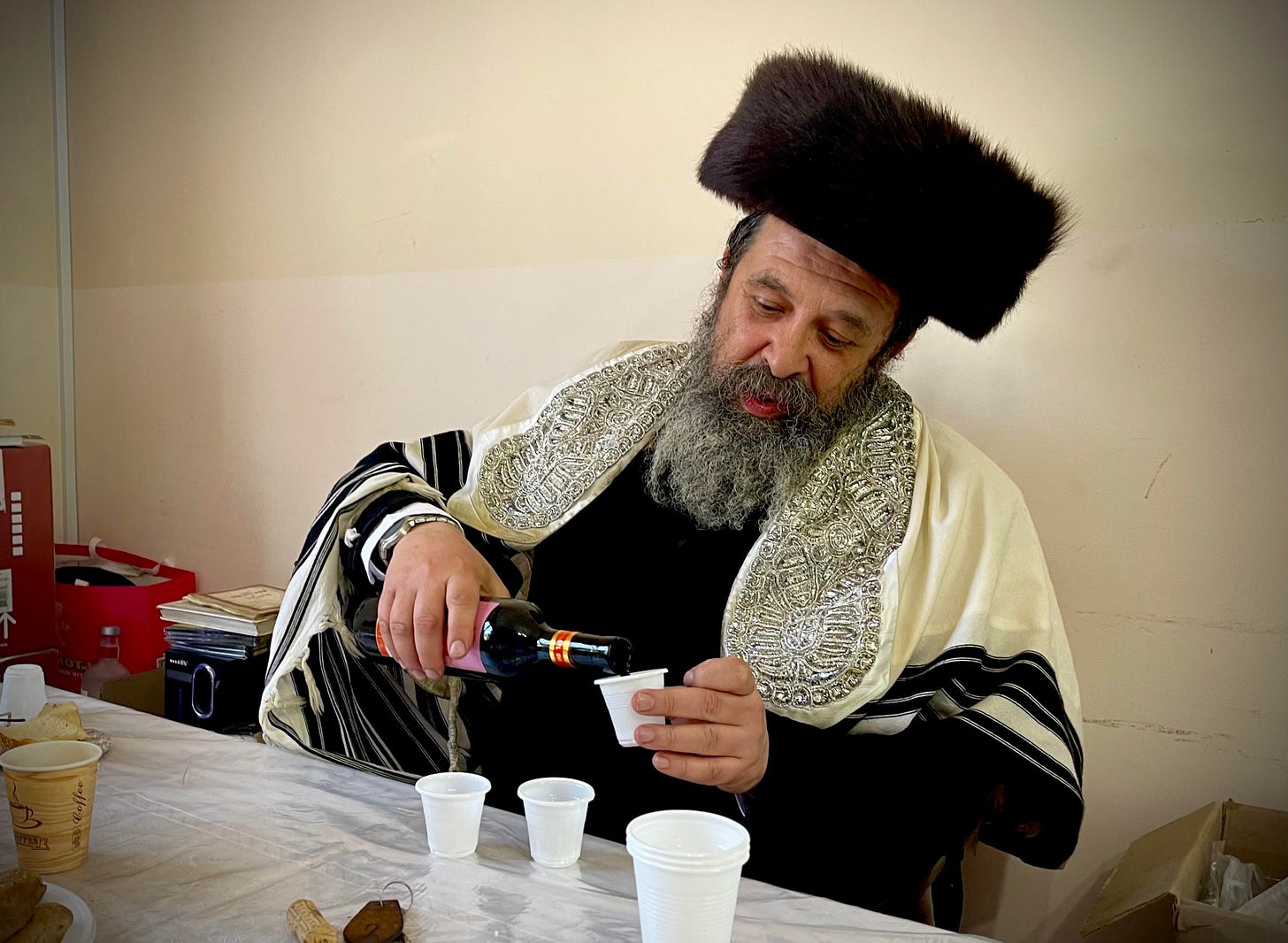Three Jews in Yerevan
It's a delicate time for Armenia's Jews - as Israel allies ever more closely with the country's nemesis Azerbaijan
The history of the Jews among the nations of the earth is filled with delicate moments. And so it is today for the Jews of Yerevan.
Armenia, a young democracy which is also the oldest Christian civilization in the world, grapples with the usual post-Soviet sordidness. Students of the genre will know this includes not only a legacy of corruption and a problematic housing stock but also border disputes: the USSR’s internal borders mangled the ethnic map so thoroughly as to guarantee conflicts should its republics one day become independent states. It was a feature, not a bug.
So it is, famously, between Russia and Ukraine – and so it is, no less passionately, between Armenia and Azerbaijan. There was a terrible war in 2020, instigated by the latter, there are border skirmishes now and then, and about 120,000 ethnic Armenians in the Nagorno-Karabakh region since December have been under a blockade by what is technically their own government in Baku.
And whereas Israel has labored (not always very elegantly) to stay away from the Ukraine war, it is implicated to the hilt in the latter conflict – on the side of Azerbaijan, a petro-kleptocracy that makes Armenia’s other neighboring nemesis, Turkey, look like a model of democracy and reasonable governance.
Israel is a major weapons supplier to and oil importer from the government of Ilham Aliyev, and reputedly uses the country as a sort-of forward base for its own imbroglios with Iran. So it is no mere diplomatic nicety that compels Israel’s president to visit Baku tomorrow. Rather, it is one of the world’s prime exemplars of realpolitik in action, and it is not making Israel very popular at all in Yerevan.
Spare a moment, then, for the handful of Armenian Jews who soldier on, as Jews have done for millennia in all kinds of situations, yielding all kinds of results.
***
Rabbi Gershon Burstein seems like a man out of space and time. Bearded and berobed, intelligent eyes sparking beneath his shtreimel, he presides over a makeshift synagogue in a ramshackle neighborhood, where he labors to pull together a minyan (the required quorum of ten Jewish adults) as part of his project to keep the flame of Judaism alive in Yerevan. Surrounded by Shavuot holiday pastries, we reflect on how there is also an Armenian diaspora in Israel – indeed an entire quarter in Jerusalem’s Old City.
I asked the 63-year-old chief (and probably only) rabbi what kept him in his place of birth when he so clearly belongs in Jerusalem or Bnei Brak. He answered with a story (which may come as no surprise): in 2011 at a Habad conference he was asked the same question by a Jerusalem-based rabbi more learned than myself. He asked Rabbi Burstein how many yeshivas there were in Yerevan (there are none) and how many minyans (they are rare). “What are you doing there then?” the other rabbi asked. Burstein replied by asking how many yeshivas there were in Jerusalem. “Oh, many,” the man proudly replied. “And how many minyans?” “More than I can count!” So Gershom asked: “What are you, then, doing there?”
Burstein denies that there is nationalism in this idea of keeping Jewishness alive in far-flung corners of the Earth. In his version of Judaism there is ahavat hinam (unconditional love) for all mankind, and all the world is as one. The Holy Land stands apart, but it, too, is meant for all. He concedes that this is not really the animating sentiment among the religious establishment in Israel. That will have to wait, he hypothesized, until yemot meshiach (the arrival of the Messiah). Until then we must suffice with ahavat Yisrael (love among Jews).
Burstein believes Armenia has a role in this future utopia, because of Mount Ararat, its national symbol. This is the reputed resting place after the great biblical flood of Noah’s Ark, which he notes carried representatives of all creatures and thus stood for global unity as well.
“There is a link between Mount Moriah in the Holy Land and Armenia’s Mount Ararat,” he said. “We are connected in this mission.”
Ararat visibly looms over Yerevan like a snowy, jagged specter, not 20 kilometers away – but across a sealed border. Lenin gifted “Western Armenia” on behalf to the Soviet Union to Turkey in 1923, shortly after the Ottoman massacre of 1.5 million Armenians. Turkey’s refusal to even recognize the genocide is behind the continued tensions to this day. Alas, “Armenia’s Mount Ararat” may have to await yemot meshiach as well.
* * *
Keep reading with a 7-day free trial
Subscribe to Ask Questions Later to keep reading this post and get 7 days of free access to the full post archives.


